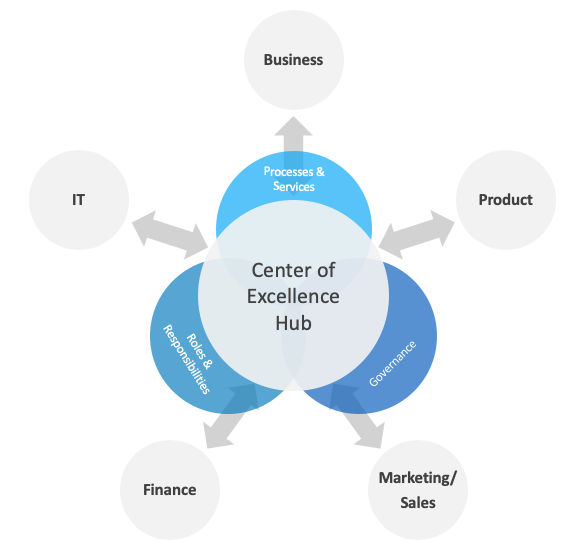Let’s say your company recently implemented a new data warehouse and created new reports with an enterprise analytics tool. You invested significant resources in the project, but your employees aren’t adopting the new solution and the insights it provides. There also isn’t a centralized resource where employees can make change requests and find information about the reports.
From a solution perspective, the project is a success. The tech stack is great and the business questions are answered, but there are some aspects that aren’t working. Maybe your staff doesn’t know who to go to with questions or where to look for definitions of KPIs. You start to wonder how you’ll sustain success and who will be in charge of keeping up the momentum for the project.
Each time your organization implements an analytics tool, you invest time, people, and money into your infrastructure. An analytics journey toward becoming a data-driven organization is a marathon rather than a sprint. How do you ensure that you’re getting the most value possible from these resources for the longer term?
Selecting and implementing the right tools is only a small part of what makes your analytics initiatives successful. To get the best return on investment and the most value from your data, you can establish an analytics center of excellence (CoE), also known as an analytics hub or BI competency center (BICC).
What is a Center of Excellence?
A center of excellence is a strategic concept that streamlines all of the analytics efforts at an organization. Imagine a highly capable team of experts that knows your organization from within and is well-acquainted with your data sources. This team possesses the skills and capabilities to leverage the data at your disposal to steer all of your efforts in the right direction. A CoE is about your organization, the processes and services you provide, and the people who will perform the responsibilities that govern how you manage your analytics solution(s).
By combining your team’s existing business, IT, and analytics skills, your CoE establishes ownership for the solution and defines the adoption plan. It’s your analytics pocket knife: everything you need in one team to ensure you make a real impact. A CoE:
Defines your analytics vision. Where do you want to be in terms of data-driven maturity? What tools will you use and what KPIs are needed to measure the business?
Builds a technology blueprint. Which tools and capabilities should you look into so that you remain ahead of the competition in three to five years?
Establishes standards. How do you define an agreeable KPI? How do you share data sources? How will you promote processes from a sandbox to production?
Manages programs and controls funding. How will you manage your data initiatives to make sure they’re successful?
Develops user skills. Who are the departmental champions? Who should participate in beginner and advanced training sessions? Should you implement other resources like office hours, a ticketing tool, and a monthly newsletter?
Organizes methodology leadership. How do you structure the team in the most efficient way to deliver the goal? Does this team belong to IT or sit within the business?

No two CoEs are the same. A CoE for a small sales organization will look different from one of a large global manufacturing company. It should sit at the heart of your organization and be tailored to your organization’s specific business objectives and organizational structure. It should also span from BI to data science and AI. In fact, many companies are now standing up AI-dedicated CoEs or shift toward having their BI CoEs focus on AI.
Regardless of your challenges and goals, the CoE ensures that the right ROI is achieved from your investments, and that standards and best practices can be replicated.
What are the roles responsibilities in a CoE?
A CoE’s responsibilities can be broken down into six core categories, each with important processes within them.

What are the first steps to getting started?
As you set out to establish an analytics center of excellence, start with the following questions:
What are the business and organizational goals that we want to achieve by standing up a CoE? What does success look like and how will we measure it?
Where are we now and how does it compare to where we want to be?
Is the entire organization aligned with the objectives of the CoE?
What new processes will we need to create? Do we need training for skills development? What roles and responsibilities do we need to perform these processes?
Where should we embed the CoE within our organization? Who will take ownership of it?
The answers to these questions will help guide the structure of your center of excellence. Once you’re on the right path, you can ensure that your analytics initiatives will be adopted by the entire organization, enabling successful projects and efficient use of resources. You’ll know it’s successful when staff knows who to rely on for all of their data questions, and your organization is able to efficiently rely on data to make decisions. Best of luck on your analytics journey! Want to learn more? Chat with an expert or download our Complete Guide to Boosting ROI with an Analytics CoE.
